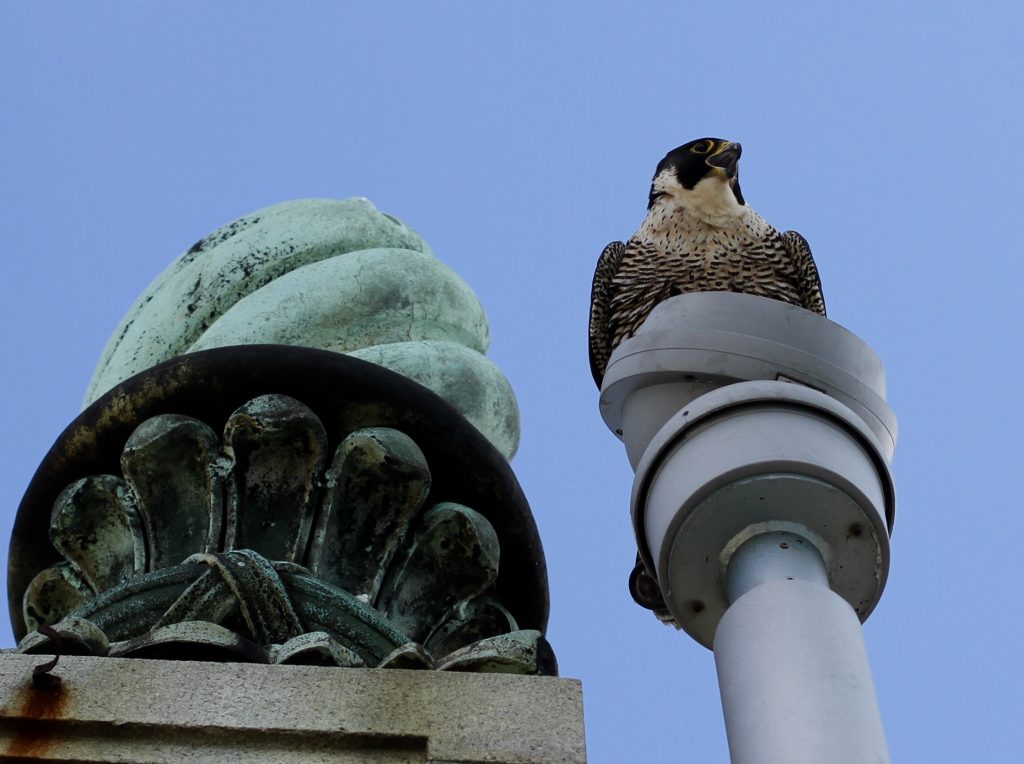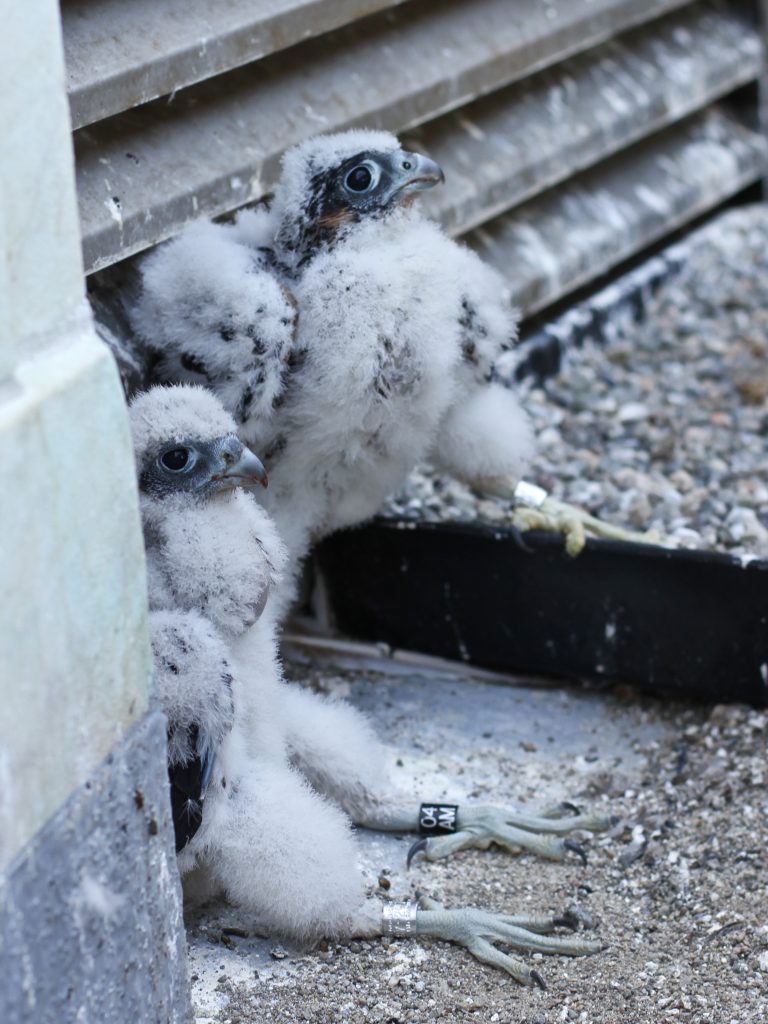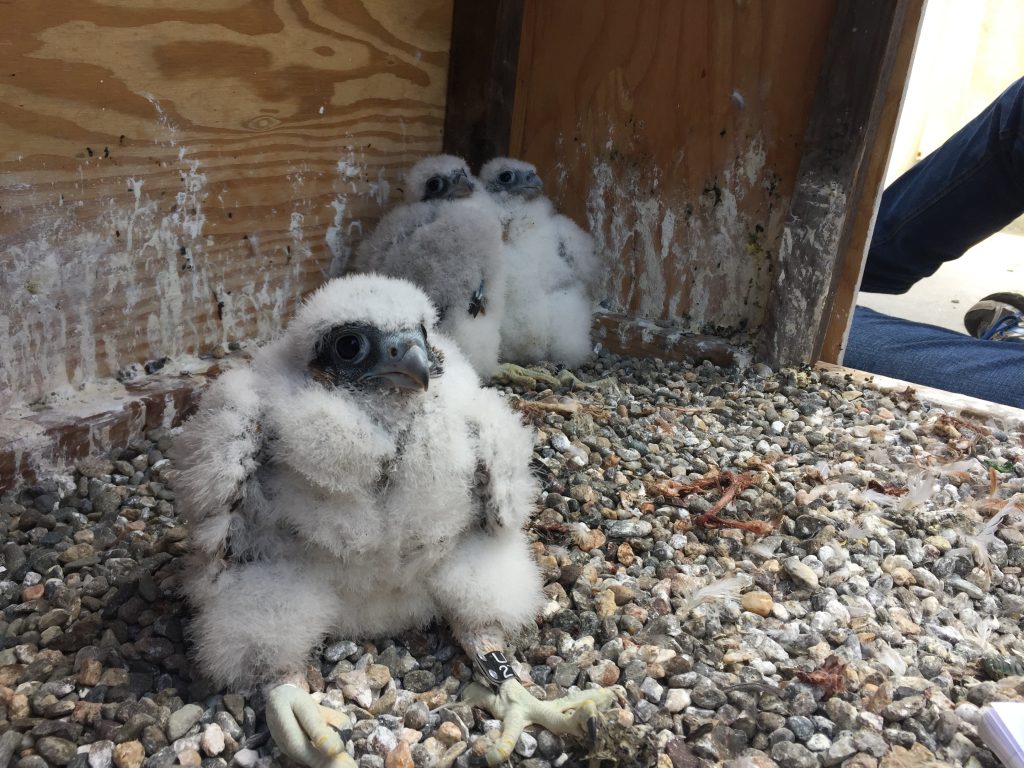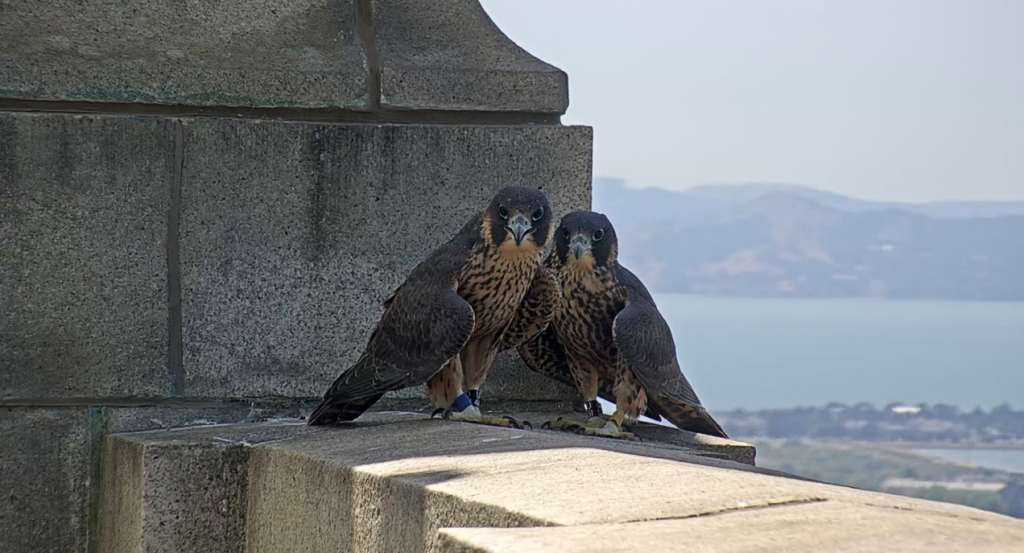We are the Peregrine Falcons nesting on top of the historic Campanile at UC Berkeley!

Annie perching on the Campanile.
Peregrine Falcons, the worlds’ fastest bird, were almost completely wiped out from the western United States by the 1970’s. With the federal ban of DDT, populations have begun to recover and many Falcons have traded in natural cliffs and mountains for hunting in skyscraper “canyons” in many cities.
In December 2016, we first observed two Peregrine Falcons setting up a territory centered on the historic Campanile at UC Berkeley. After finding a makeshift nest on a sandbag in March 2017, we installed a temporary nest box to encourage a successful nesting effort.

Fiat and Lux on banding day.
In May 2017, the Falcons fledged two young, named Fiat (male) and Lux (female) after Berkeley’s motto. Fiat survived to independence and left his parents’ territory in August. Lux was unfortunately killed when she hit a window.
In 2018, we were excited to see the adult Falcons initiating courtship around the Campanile again. We installed a permanent nest box to protect the chicks from weather and waited to see what would happen.

Lawrencium, Californium, and Berkelium.
In April, the Falcons hatched three chicks, named after three elements discovered at UC Berkeley (Berkelium – male, Californium – male, and Lawrencium – female). All three chicks successfully left the nest and spent the summer exploring the campus. Since leaving their parents’ territory, Lawrencium has been seen in the Marin Headlands north of San Francisco and on Alcatraz!

Carson and Cade after leaving the nest.
In January of 2019, after a crowdfunding campaign generously supported by hundreds of people, we installed two webcams to monitor the nesting area and balcony. Thanks to the new webcams, we were able to monitor the breeding season in unprecedented detail! Annie and Grinnell successfully fledged two chicks: named Carson and Cade after Rachel Carson, author of Silent Spring, and Tom Cade, founder of the Peregrine Fund.
